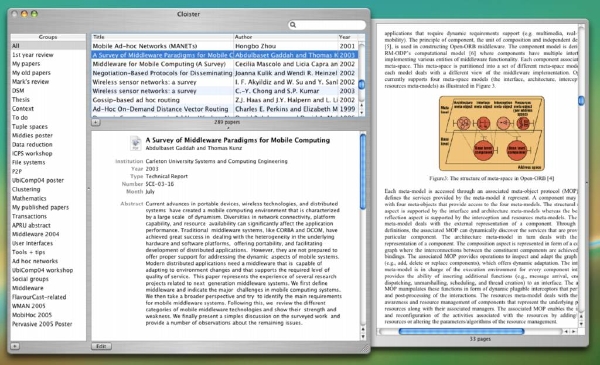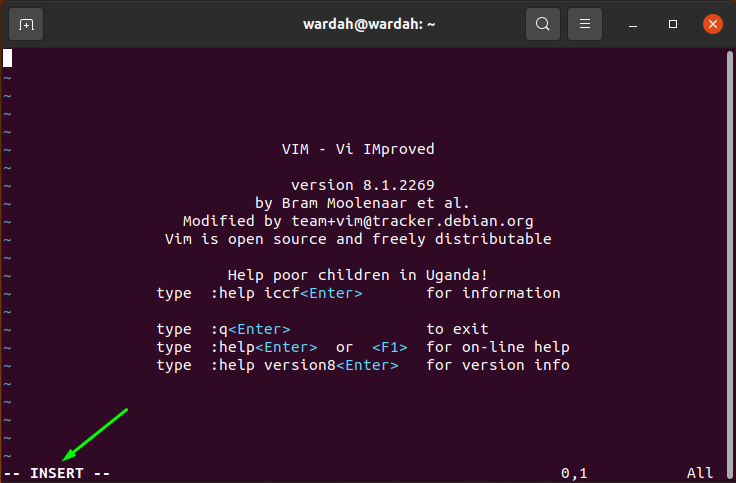
Report what you see as the output within the Terminal.
#BBEDIT VIM MODE FULL#
You can do this using a full or relative path. Change directories into genomics_data.The commands are head and tail and they just let you look at the beginning and end of a file respectively. In particular, if we just want to see the beginning or end of the file to see how it’s formatted. There’s another way that we can look at files, and just look at part of them. You can think of it as being analagous to using the Ctrl-F keystroke when searching on your laptop. There are other more sophisticated commands to search through your file (and we will cover these later), but this shortcut search is useful for a quick scan through. You need to go to the beginning of the file and search. If you start a search when you are at the end of the file, less will not find it. You can see that we go right to that sequence and can see what it looks like. For instance, let’s search for the sequence GAGACCC in our file. Less searches from the current location and works its way forward. If you hit / then ENTER, less will just repeat the previous search.

The interface will move to show you the location where that string is found, and highlight the string. Now, enter the name of the string of characters you would like to search for and hit the enter key.

Just type in / to begin a search, you will see that the / will show up at the bottom of the less buffer. Less also gives you a way of searching through files. Use the shortcut keys to move through your FASTQ file, we will explore these files in more detail later in the workshop. Below we have listed some additional shortcut keys for naviagting through your file when using less. This is because man is using the less command to open up the documentation files! The keys used to move around the file are identical to the man command. Does this look familiar? You might remember encountering a similar interface when you used the man command. Rather than printing to screen, the less command opens the file in a new buffer allowing you to navigate through it. Let’s take a look at the list of raw_fastq files and add the -h modifier to see how big the files are. In practice, when you are running your analyses on the command-line you will most likely be dealing with large files. QIKDLLVSSSTDLDTTLVLVNAIYFKGMWKTAFNAEDTREMPFHVTKQESKPVQMMCMNNSFNVATLPAEĬat is a terrific command, but when the file is really big, it can be annoying to use. >gi|129295|sp|P01013|OVAX_CHICK GENE X PROTEIN (OVALBUMIN-RELATED ) TCCGCGACTGGGTGCGTGAACGCATGGCCGAACTCGTCAAGGAACAGCTGCAGCGGATCGCTCCGGGTTTTGAGCTGGTCTTCGCTĬTGGACGAAGAGGCAGCAGCGGCGACATCGGCACCGACCGCGAGCATTGCGCCCGAGCGCAGCAGCGCACCCGGTGGTCACCGCCTĬAACCCAGCCTTCAACTTCCAGTCCTACGTCGAAGGGAAGTCCAATCAGCTCGCCCTGGCGGCAGCCCGCCAGGTTGCCCAGCATCĬAGGCAAATCCTACAACCCACTGTACATTTATGGTGGTGTGGGCCTCGGCAAGACGCACCTCATGCAGGCCGTGGGCAACGATATCĬTGCAGCGGCAACCCGAGGCCAAGGTGCTCTATATCAGCTCCGAAGGCTTCATCATGGATATGGTGCGCTCGCTGCAACACAATACĬATCAACGACTTCAAACAGCGTTATCGCAAGCTGGACGCCCTGCTCATCGACGACATCCAGTTCTTTGCGGGCAAGGACCGCACCC

>gi|340780744|ref|NC_015850.1| Acidithiobacillus caldus SM-1 chromosome, complete genomeĪTGAGTAGTCATTCAGCGCCGACAGCGTTGCAAGATGGAGCCGCGCTGTGGTCCGCCCTATGCGTCCAACTGGAGCTCGTCACGAG GGGGGGGGGGGGGGGGCTTTTTTTGTTTGGAACCGAAAGGGTTTTGAATTTCAAACCCTTTTCGGTTTCCAACCTTCCAAAGCAATGCCAATA Enter the command followed by the filename, including the path when necessary: We can test this out by printing the contents of ~/unix_lesson/other/sequences.fa. The easiest way to examine a file is to just print out all of its contents using the command cat.

Instead we will need to equip ourseleves with some helpful commands. As you will have noticed so far, the point and click of the mouse is not very useful when working on the command-line.
#BBEDIT VIM MODE HOW TO#
We now know how to move around the file system and look at the contents of directories, but how do we look at the contents of files? On your laptop, viewing a file is as simple as finding it in the file explorer window and double clicking to open it. Execute basic shortcuts in the Vim text editor.Create a new file using the Vim text editor.Working with files on the command-line View on GitHubĪpproximate time: 30 min Learning Objectives Working with files on the command-line | Introduction to the command line interface (Shell) Skip to the content.


 0 kommentar(er)
0 kommentar(er)
